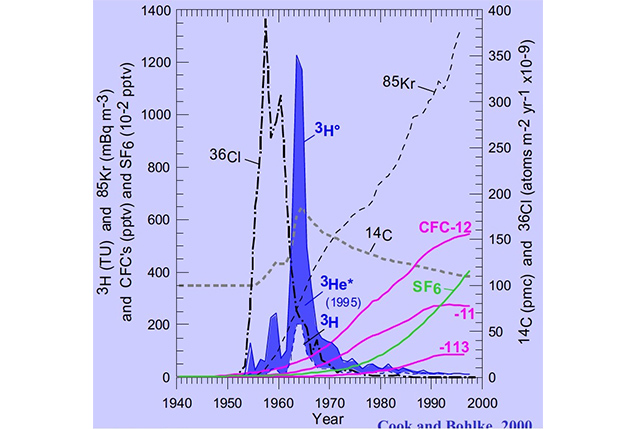Forensic hydrology
Forensic hydrology aims at solving hydrological questions that cause debate (sometimes associated with crime or ending up in court), by applying hydrological and hydrogeochemical methods. The questions often relate to (i) identifying potential sources of contamination, (ii) identifying the origin of water, e.g. local rain, infiltrated surface water, leaky sewer system, seawater, halite leachate etc., (iii) determining the age (distribution) or recharge rate of water, (iv) determining the characteristics of the porous medium, e.g. permeability, hydraulic resistence and porosity, and (v) detecting (bio)geochemical reactions responsible for transformation.
The research aims specifically at the development of tools to:
- identify and quantify the contributing end-members in mixed water bodies via multitracing and hydrochemical fingerprinting
- identify the pollutant sources of groundwater in specific settings (urban, agriculture, industrial, infiltrating surface water, salinization etc.).
- date groundwater via environmental tracers such as isotopes, gases, main and trace constituents
- tag water with DNA particles, so as to detailedly define the transport pathways and times of surface and groundwater
- identify and quantify the operating (bio)geochemical reactions responsible for well clogging, the appearance or disappearance of undesired compounds such as nitrate, arsenic, uranium and organic micropollutants

